The 37th obstetric week of pregnancy is a time when every expectant mother should already be ready for the birth of a baby. According to official medicine, a child born at thirty-seventh week is considered full-term. This is especially true for multiple pregnancy and the birth of a second, third, subsequent children. The weight of the crumbs in this period reaches 2.8 - 2.9 kg, and growth varies between 48 - 50 cm. What is important for the expectant mother to think about at that time?
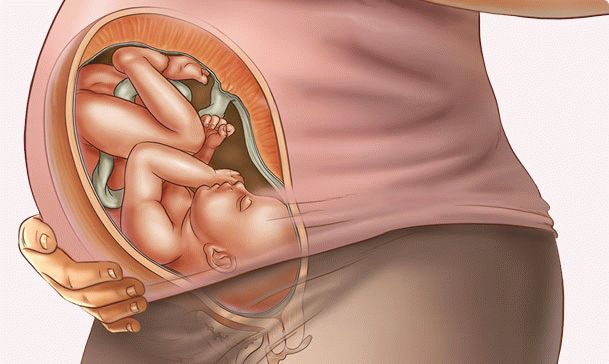
How many months?
A period of 37 weeks means that conception occurred about 35 weeks ago. And this is the beginning of 10 months (here about calculating the duration of pregnancy).
Fetal development
What happens to the baby this critical week? Its body is already formed, only weight gain continues. Twins weigh less than ordinary children. The unborn baby has all the signs of a full-term baby. At this time, the mother observes his reaction to her actions, sometimes she can even understand what the baby does not like and what gives special pleasure.

Internal fetal changes
The aging of the placenta begins, with the result that the baby receives less and less nutrients and oxygen. Unlike the 36th week, at the 37-week period, the lungs are already quite developed. It’s just that at the moment they are not yet included in the blood supply system, which is automatically corrected during delivery, when a valve is opened in the heart for blood to enter the lungs. The hormone produced in a small body called cortisone indicates the complete development of the respiratory system. And the child himself is already trying to make breathing and swallowing movements.
The organs of hearing and sight have already matured. They allow the fetus to perceive and distinguish the voices of people, enjoy the mother’s native voice and even hear melodies and music. The digestive system is also actively involved in the work. In the intestine, already making peristaltic movements, the first feces (meconium) were formed in small quantities.
A process is launched in the brain that lasts throughout the first year of life - the development of coordination of movements.A protective membrane (the so-called myelin layer) is involved in the transmission of nerve impulses on neurons. The work of the brain is becoming more harmonious. Reflexes are becoming more stable, especially the sucking reflex. All past crumbs, except for sleep, are accompanied by sucking a finger, because this is how preparation for natural feeding occurs.
External changes in the fetus
If the expectant mother could contemplate her child, then she would see that the fluff (lanugo) almost left his body, and his skin is light pink, as the subcutaneous fat layer began to form. Thanks to the fat, the baby’s cheeks are chubby and prettier. This week, the head is covered with hair even more, and the nails extend beyond the fingers. So the baby can already scratch itself.
The skull has not yet stiffened, so the head remains soft, which in the future will help the fetus pass through the birth canal. The process of compaction of the nasal and ear cartilage continues, and now on the baby’s head are fully formed nose and ears. By the thirty-seventh week, the reproductive system is also fully formed, and the boys' testicles descend into the scrotum. Sometimes ultrasound at this time can even determine who the baby looks like.
The lifestyle of the crumbs is almost no different from the life of a recently born baby. Most of his time goes to sleep, and the rest goes to sucking fingers or umbilical cords. Sleep now consists not only of a fast phase, but also of a slow one, when the pressure decreases and the muscles relax. That is why the number of movements decreases. Hiccups (reduction of the diaphragm) of the baby gradually disappears.
The location of the fetus in the uterus
The position of the fetus is stable. The most common headache, that is, the correct presentation. In this position, the baby lies head down with legs and arms crossed. Less commonly, doctors report pelvic presentation (incorrect).
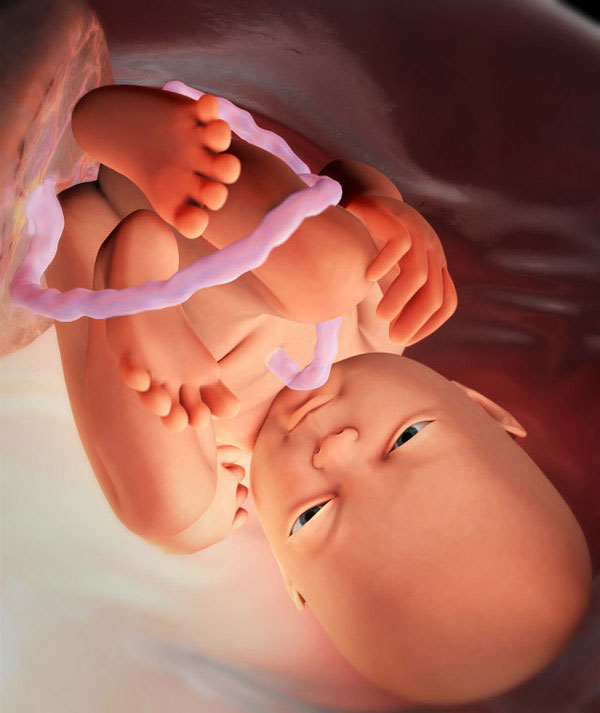
In some cases, due to the incorrect position of the fetus, a cesarean section is prescribed. However, do not immediately panic. It is possible to induce a child to turn to the desired position through specially designed exercises. Whether the child returned to the correct position is specified during the ultrasound.
What happens to the body and sensations of a woman
The thirty-seventh week is characterized by a state of continuous expectation of the onset of labor. The desire to give birth soon is often strengthened by relatives, constantly asking about when the baby will already appear. Rememberthat almost every expectant mother is forced to answer such questions. Therefore, the curiosity and excitement of others should be treated calmly. In addition, from this week the desire for an early birth will only increase.
The cervix continues to mature. The fact that the cervix has matured can be recognized by its length - it should be less than 1 cm, and the length of the immature neck starts from 2 cm. Closer to the birth of the baby, the cervix softens, remaining dense only in the area of the internal pharynx. If the neck is softened sufficiently, labor can begin.
A sign of an upcoming meeting with a daughter or son may be a temperature. In general, an elevated temperature can hold on to the entire pregnancy, since for a woman in a position, low heat transfer is the norm. But if the temperature suddenly suddenly “jumped” the mark of 38 degrees, you should consult a doctor. This may be the result of an infection or other ailment, or it may be a signal that you should go to the hospital.
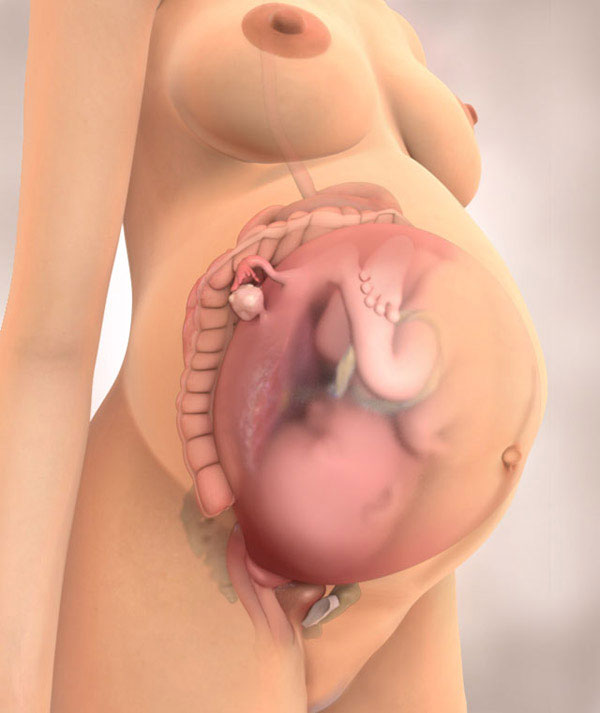
A woman begins to experience a whole gamut of new sensations for her. Despite the fact that you feel all the same awkward, you weight may decrease. This is one of the points of preparation of the body for the approaching birth.During pregnancy at the thirty-seventh week, due to stretching of the skin, the skin of the abdomen can be very itchy, and the navel can turn out. You can also notice how the strip on the tummy darkens, but this is not a cause for alarm, since after birth the strip will gradually disappear.
Digestive disorders, nausea, and loose stools can become pregnant partners during the 37th obstetric week. Thus, the body gets rid of everything that can interfere with the course of the birth process. If you still calmly wear rings on your fingers and don’t have problems wearing your shoes, you are very lucky. Most women in this period have to deal with swelling of the arms and legs. The reason is a sedentary lifestyle, an unusually large burden on the work of the kidneys, as well as an excess of salt in the diet.
Harbingers of Childbirth
At the age of 37, the stomach can fall down, and the baby's head can move to the pelvic area. Along with this, heartburn and shortness of breath go away, so mom can breathe calmly. But now the whole weight of the abdomen falls on the bladder and stomach, so the desire to go to the toilet will visit you more often. Since the fetus presses on the organs of the lower body, hemorrhoids may appear, delivering not only inconvenience, but also painful sensations. In this case, it will be useful to lean on foods with laxative properties.
Immediate delivery is foreshadowed by various pain. The most striking harbinger of childbirth are Brexton-Hicks contractions, reminiscent of pain during menstruation. These are training fights that prepare the uterus for the upcoming serious “work”. Such contractions are also called "false".
The contractions are becoming more and more like labor pains. Along with this, the pain of a woman becomes longer. At this stage, due to weight gain, pain can be heard in the back, groin, and abdomen. Training fights are also destined to experience not all.
Pain
At the 37th obstetric week, the general feeling of discomfort increases, the following pains may bother future mothers:
- manifested more distinctly pain in the perineum;
- pain in the legs, especially when you have to stand or walk for a long time;
- numbness of the legs and arms due to impaired microcirculation of blood;
- aching pain in the lower back and tailbone;
- the tremors of the child, which, although less common, are becoming more noticeable;
- pulling pain in the lower abdomen, which may indicate an imminent discharge of the mucous plug.
If you notice periodic pain in the abdomen, consult your doctor right away. The feeling that the stomach is pulling is quite normal for a given period. However, if you have repeatedly noted that the stomach is "stony", this is also an occasion to visit a doctor. A "stony" stomach is most likely a sign that the uterus is in a state of hypertonicity, and this often leads to premature birth.
Discharge
The hormonal background changes throughout pregnancy. In connection with the next changes at term 37, the discharge becomes more intense and more fluid. But if the discharge is too liquid, this may be a sign of water leakage. Therefore, you should urgently conduct a special test that can be done in the hospital or at home by buying it at the nearest pharmacy. If the water has a greenish tint or is allocated in large portions, urgently go to the maternity hospital.
Colorless, yellowish or pinkish mucus with a small amount of blood streaks is added to the usual secretions. This is a mucous plug that protects the entrance of the uterus from various microorganisms throughout pregnancy. Usually the cork starts to come out in parts half a month before the expected birth.If she has already departed, then it is better for a woman to suspend her intimate life and not swim in stagnant water, so as not to cause an infection. Also colostrum may start to stand out from the chest.
What you need to know about 37 weeks of gestation
Intimate life
The thirty-seventh week of pregnancy in itself is by no means a reason for refusing an active sex life. However, with poor health, the onset of labor and the cork is sex is contraindicated. Also, repose can be prescribed by doctors. And even if it seems to you that the doctor’s prescriptions are not justified, it is better to listen to his opinion, because sex at such a time may lead to the onset of childbirth.
Sometimes future parents themselves in the last weeks of pregnancy voluntarily refuse to have an intimate life. They understand that the child is already “adult”, and this becomes a psychological barrier for them. Others are afraid to harm the baby. And some couples are just uncomfortable having sex when their belly is already quite large. This is especially true for a woman who, instead of having a good time, can only get a feeling of discomfort.
Examination of the pregnant
If you are not shown other examinations, then the main procedure this week is cardiotocography (CGT). This is a record of the fetal heartbeat, as well as the contractions and movements of the uterus. CGT is needed to determine the presence of possible pathologies of the fetus and mother. This examination will help to identify disorders such as hypoxia, an abnormality of the development of the cardiovascular system, the threat of premature birth, infection of the fetus, low and high water.
In the obstetrician’s office, they’ll check the results of the tests you’ve already handed over, as you usually measure blood pressure, find out the circumference of the tummy, and die the height of the uterine fundus. Limbs should also be checked for swelling. In addition, the doctor can check the readiness of the cervix for childbirth.
What to fear
Each week of pregnancy has its own risks, and week 37 is no exception. The main danger at this time is the possibility of gestosis. This term refers to a condition where the body can not cope with the double load, resulting in impaired renal function. The first symptoms are an increase in pressure, swelling and an increase in the protein index in the analysis of urine.
If early signs of gestosis are ignored, more serious symptoms may occur. These include headache, dizziness, loss of consciousness and the appearance of "flies" in front of the eyes. In this case, you may not even have time to call an ambulance. Therefore, it will be much more reasonable to deal with gestosis at the initial stage (they wrote about toxicosis and gestosis).
In the final weeks of pregnancy, there is a risk of premature placental abruption. This can lead to the loss of a considerable amount of blood, oxygen starvation of the fetus, and even death. You can find out about possible detachment of the placenta by a sharp pain in the abdomen and by traces of bloody discharge on linen. Women, whose last birth was performed by Caesarean section, should know that there is a risk of uterine rupture in an old, already healed scar. Therefore, any significant pain in the abdomen should serve as a reason to check the condition of the uterus.
Cesarean section
This is too early for the planned Caesarean section. But cases of emergency caesarean section for thirty-seven obstetric weeks from the beginning of pregnancy are not uncommon. Surgery for a period of 37 is prescribed when something threatens the life of the baby and mother.
Indications for emergency surgery may be many. The main ones are acute hypoxia (insufficient oxygen supply to the fetus), a mismatch in the size of the head of the baby and the pelvis of the mother, entwining the fetus with an umbilical cord and placental abruption.But a woman should not be overly worried if she is prescribed a cesarean section. All systems and organs of the child are already formed, so he is quite ready for extrauterine life.
What can I recommend to expectant mother
- The very first and main advice - be mentally prepared for childbirth. The kid may decide to be born this week, so you must understand that the contractions can begin at any time.
- Continue to attend antenatal clinics and complete doctor appointments.
- Find out exactly in which maternity hospital you have to give birth to a child. It's time to pay a visit to the doctor who plans to take your birth and discuss with him all the possible details. Also discuss what additional services you will use. If your husband wants to be personally present at the moment of birth of the crumbs, it is time for him to pass all the necessary tests for this.
- If the bag for a trip to the hospital has not yet been assembled, do it in the very near future (here is a list of things).
- Do not relax. You should not spend all your free time with embroidery or computer. Keep walking and moving. The main thing is to do everything in moderation.
- Do you use a bandage? Then it’s time to take it off, since it can impede the timely lowering of the abdomen, which can delay the birth of a baby.
- Follow your daily diet and drink at least one and a half liters of clean water. Your table should be as spicy, fried, greasy and sweet as possible. Eat more vegetables and foods that prevent constipation. Avoid allergenic foods.
- It's time to familiarize yourself with the rules for caring for the baby, especially if you are becoming a mother for the first time. For example, you can study all issues related to breastfeeding. So it will be easier for you to assume maternal responsibilities. (Here's the article “The most important newborn care tips. The best memo article for moms and dads“And here is the article“Fundamental advice to nursing mothers on breastfeeding“)
Your pregnancy is coming to an end. If you are expecting a first baby, then usually delivery occurs around the fortieth week, although there are exceptions. Do not let fears and negative thoughts overshadow the joy of an early meeting with your son or daughter. Enjoy the last minutes of such a wonderful state as pregnancy!

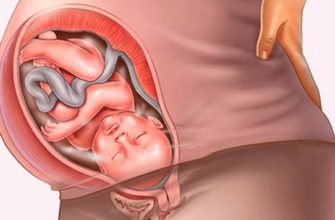

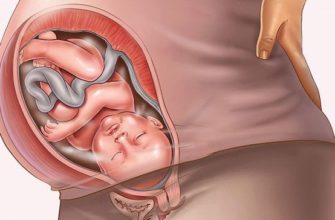
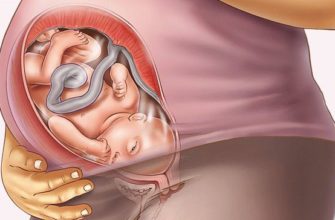
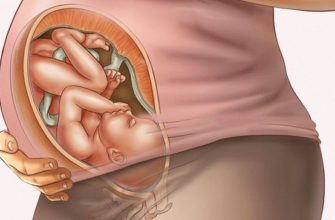
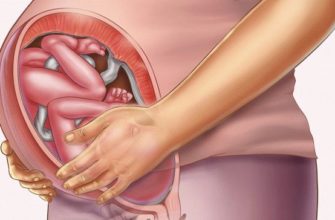

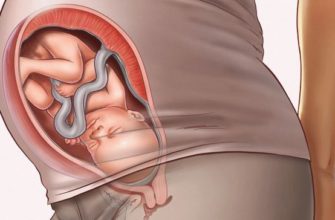
Shortly before the birth, I was fully prepared for sending to the hospital: the documents are ready, the phone is always at hand and the bag I packed with all kinds of things that you may need. Remember mom: caution is never superfluous! I regularly visited a doctor, ate right and walked a lot (you can’t work out with an active variety). If you perform all of the above, your baby will definitely be healthy and born without any problems.
But I gave birth to my daughter at 39 weeks, before birth I lost weight, the mucous plug went out for 2 weeks, but my baby hiccuped until birth, and also hiccuped after birth! For those who are going to give birth with a “support group” in the person of their husband, mother or other relatives, I would advise them to prepare for this process. So that they understand what will happen to you, and what they should do in a given situation. My husband massaged my lower back, reminded me of how to push and breathe, supported me under the back during contractions, in short, worked along with me! For which I am very grateful to him!